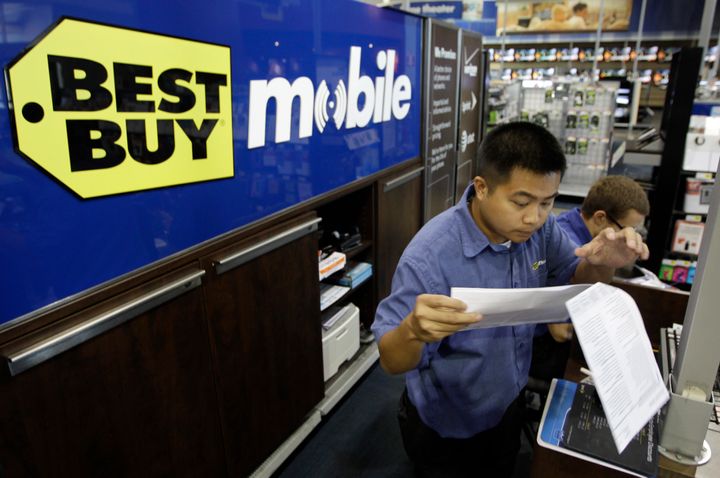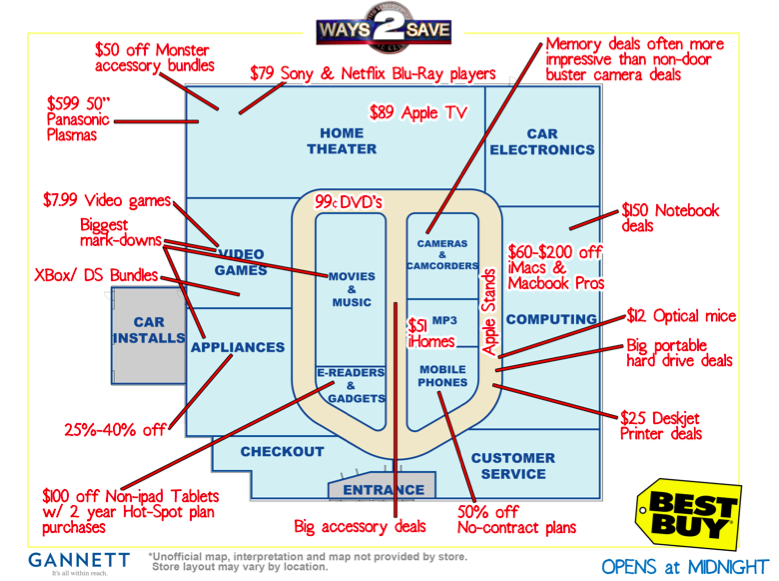
The 2011 holiday shopping season saw a 15 percent increase in online sales, up to $35.3 billion, according to Comscore, but consumer electronics retail bellweather Best Buy reported a one percent decline in holiday sales. What is going on? Pretty simple -- we are in the middle of another battle between brick and mortar and e-commerce and it will continue to drive our venture capital spending strategy.
The opening decade of the new millennium brought us the death of retail: version 1.0 - when virtual goods sold online replaced physical goods sold in brick and mortar stores.
Digital music replaced CDs. Remember Tower Records and the Virgin Megastore? They were part of an endless parade of high-profile retail music casualties. Amazon streamlined the process of buying physical books online, and then brought us the Kindle and pioneered digital books. Brick and mortar book retailers such as Borders and its affiliate Walden Books crumbled, with Barnes and Noble not far behind, likely leaving its Nook spinoff as its surviving legacy. Netflix helped Blockbuster close thousands of stores and enter Chapter 11 to be bought by Dish Network. Digital cameras crushed 4,000 Fotomat stores and brought Kodak to the edge of Chapter 11. All the while Amazon and Apple became the new digital mega-stores for music, movies, TV shows, books, magazines and newspapers. For Christmas, our stockings had gift cards and our family bought most of our gifts at the last minute, online, instead of at the mall like we did ten years ago.
This decade will usher in the second chapter, when a veritable parade of consumer electronics gear disappears off the shelves of retailers, resulting in the collapse of specialty stores including Best Buy, Fry's, hhgregg, Comp USA, Microcenter, Radio Shack, Ritz Camera and dozens of other similar companies. Staples and Office Depot will not be far behind.
The death of retail version 2.0 is a result of three trends - substitution, unbundling, and integration - that have been building steam for years, but that are now intersecting with a deadly multiplier effect.
1. Substitution: We are now substituting digital goods for physical goods - music, movies, books, newspapers and magazines. Substitution has peaked, reshaping retail forever. This is why the growth of digital media and mobile devices is so important and why we were early investors in companies like AppTap, SnappCloud, Stitcher and Tap 'n Tap.
2. Unbundling: Why buy the album when you only want the song? Music is now unbundled. Why buy the movie when you can stream it? An increasing catalog is available for streaming at a flat monthly fee. Later releases are available to rent. Why subscribe to a cable bundle when you only watch a few shows? Most television shows are now available a-la-carte, and cable will soon be unbundled as I predicted earlier on Huffington Post.
3. Integration: Digital cameras, camcorders, car GPS systems, car DVD players, satellite radios, stand-alone stereo systems, DVD players, scanners, e-book readers, television screens (smaller sizes), digital picture frames and video game consoles are all dying product categories. The core functionality of each of these once-upon- a-time standalone devices has been integrated into new smartphones and tablets. As an example, we long ago replaced our home stereo system with iPods, and have music streaming to most of our common areas via iTunes and Pandora.
So what about Best Buy? Why did their sales drop this holiday season? This still $8B market value company is dying for serious and not-fixable reasons. Best Buy CEO Brian Dunn misses the point in his most recent blog. This company is the poster child of this second chapter of retail so let's take a closer look.
For Black Friday 2011, Gannett prepared a map of a Best Buy store and it gives us a great starting point. What do you see?

Let me tell you what I see. I see a store that is dying from the core out. The core of a Best Buy store, the inner part of the store, is comprised of DVDs, CDs, digital cameras, digital camcorders, MP3 players, mobile phones and accessories, and gadgets. Of these items, most have gone digital-downloadable, or been built into smart phones. And is Best Buy really the place you want to go to buy your next phone?
But the outer ring of Best Buy is dying as well. Lets take a clockwise tour. Appliances are here to stay, but are not a frequent purchase. Video games are moving into the cloud. Home theatre is stagnant. Television has been redefined from the television set, to the content that used to be only available on the television set. We may continue to upgrade our main television screen at home every 3-5 years, but more and more we will consume movies and television on our desktops, tablets, and phones. So sales of second and third TVs are dying quickly. In-car electronics, standalone GPS, satellite radio, seatback DVD players and HD radio will quickly disappear, replaced only by the smartphone powering a dumb screen on the dashboard. And then there is computing. Tablets are quickly replacing netbooks, and tablets are eating in to desktop computers as well. I can see the day in the near future where I no longer buy a desktop computer for my home. We may need one printer at home, and the smart phone camera is quickly becoming a great scanner.
Yes, Best Buy is dying, from the core of the store out. But it is not alone. Welcome to the new world of retailing, the death of retail 2.0. Look for this to repeat across the country over the next three years.
Who will pick up the pieces? Integrated online merchants like Apple and Amazon, specialty merchants serving well-defined niche markets, delivery services like UPS and FedEx and broad spectrum retailers like Target and Walmart will be the pillars of the new retail ecosystem. Entrepreneurs that build businesses within this new construct will ride this next wave.